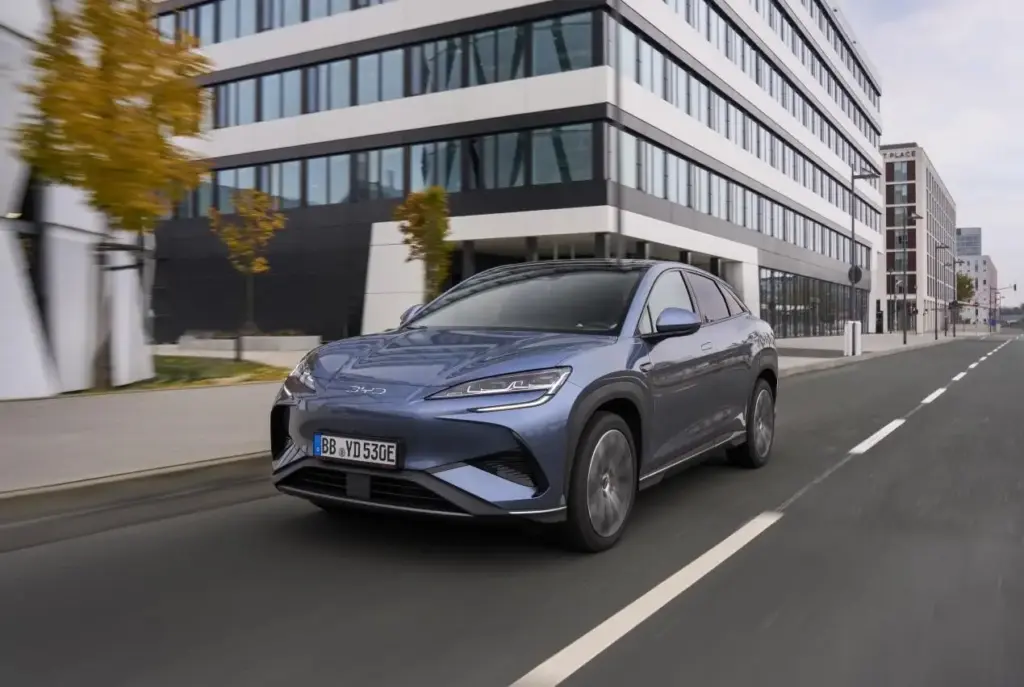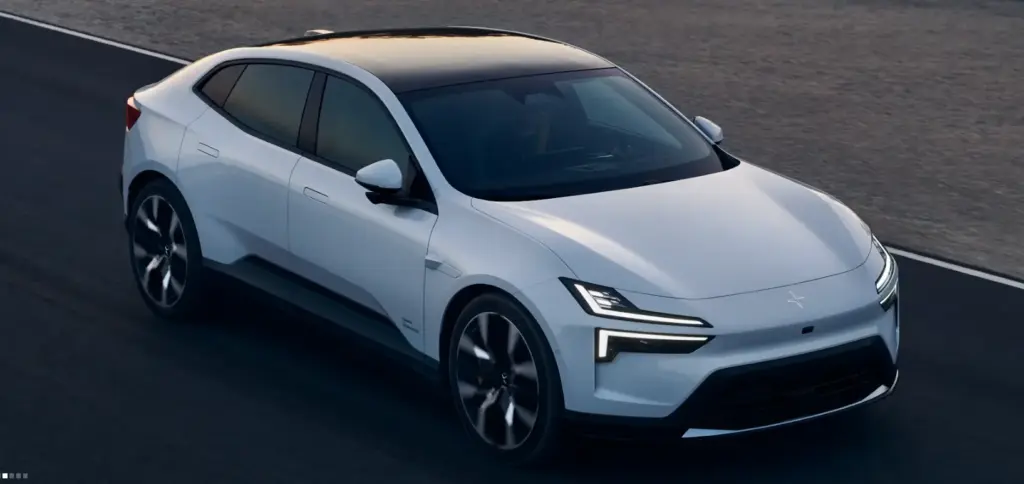The Biden administration has finalized new regulations that effectively ban Chinese-made vehicles and connected technologies from the U.S. market. Citing national security risks, the rules aim to protect Americans’ data from foreign adversaries. This move could reshape the automotive industry, impacting automakers, consumers, and global trade dynamics.
Why the Biden Administration Banned Chinese Cars
The decision to bar Chinese cars stems from growing concerns over national security and data privacy. Connected vehicle technologies, which are increasingly common in modern cars, have become a focal point of these worries.
How Connected Vehicle Tech Poses a Threat
Today’s cars are more than just vehicles—they’re data hubs. Equipped with cameras, microphones, GPS, and internet connectivity, they collect vast amounts of sensitive information.
Commerce Secretary Gina Raimondo highlighted the risks: “It doesn’t take much imagination to see how a foreign adversary with access to this data could pose a serious threat.” For example, GPS data could reveal the locations of critical infrastructure, while microphones and cameras could be used for surveillance.
Modern vehicles also rely on over-the-air (OTA) software updates, which could be exploited to introduce malicious code. This creates a potential backdoor for cyberattacks, making connected vehicles a significant security risk.
The Role of China and Russia as “Countries of Concern”
The Biden administration has classified China and Russia as “countries of concern” due to their history of cyber espionage and data exploitation. By restricting vehicles and technologies from these nations, the U.S. aims to prevent potential misuse of data and ensure national security.
China, in particular, has been accused of using its technological advancements to gather intelligence and influence global markets. The rapid growth of China’s automotive sector, especially in electric vehicles (EVs), has raised alarms about its potential to dominate critical industries.
Key Details of the New Regulations
The new rules target specific technologies and set a clear timeline for implementation. Here’s what you need to know:
What Technologies Are Banned?
The ban focuses on connected vehicle technologies, including:
- Bluetooth and Wi-Fi systems
- GPS and satellite navigation
- Software enabling autonomous driving
- Over-the-air (OTA) update systems
These technologies are critical for modern vehicles but also create vulnerabilities that could be exploited by foreign adversaries. For instance, a compromised GPS system could misdirect vehicles, while hacked OTA updates could disable critical functions.
Timeline for Implementation: 2027 and 2029 Model Years

The regulations will take effect in two phases:
- 2027 model-year vehicles: Software and hardware from “countries of concern” will be prohibited.
- 2029 model-year vehicles: Full enforcement of the ban, including stricter compliance requirements.
This phased approach gives automakers time to adapt but has already sparked concerns about feasibility. Many industry experts argue that the timeline is too aggressive, given the complexity of sourcing alternative suppliers and redesigning vehicle systems.
Exemptions for Heavy-Duty Vehicles and Electric Buses
Not all vehicles are subject to the ban. Exemptions include:
- Vehicles weighing over 10,000 pounds (e.g., electric buses)
- Pre-existing software that is no longer maintained by Chinese firms
These exemptions aim to balance national security with practical industry needs. For example, electric buses manufactured by Chinese companies will still be allowed in markets like California, where they play a crucial role in public transportation.
Impact on the Automotive Industry
The ban has sent shockwaves through the automotive industry, affecting manufacturers, suppliers, and consumers alike.
How Automakers Like Polestar and Waymo Are Affected
Polestar, a Chinese-owned EV manufacturer, warned that the ban could prevent it from selling cars in the U.S., even those built in its South Carolina factory. The company has invested heavily in the U.S. market, and the new rules could undermine its growth strategy.
Waymo, Alphabet’s self-driving subsidiary, may also face challenges. The company plans to use vehicles manufactured by Geely, a Chinese automaker, for its future autonomous fleet. The ban could force Waymo to find alternative suppliers, delaying its rollout of autonomous vehicles.
Challenges in Sourcing Alternative Suppliers
Automakers are scrambling to find alternative suppliers for banned technologies. However, transitioning to new suppliers is complex and time-consuming. Many critical components, such as semiconductors and sensors, are currently sourced from China.
Industry representatives have called for delays, arguing that the timeline is too aggressive. They warn that rushed transitions could lead to supply chain disruptions, increased costs, and reduced vehicle quality.
Potential Reduction in EV Options for U.S. Consumers
The ban could limit the availability of affordable electric vehicles in the U.S. market. Chinese automakers have been leaders in EV innovation, offering high-quality vehicles at competitive prices. Their exclusion may leave American consumers with fewer choices, potentially slowing the adoption of EVs.
Escalating U.S.-China Trade Tensions
The ban is the latest move in an ongoing trade war between the U.S. and China. In 2024, the Biden administration raised tariffs on Chinese EVs from 25% to 100%, citing a surge in exports. These new regulations extend the restrictions to include software and hardware, further straining relations.
Parallels to the TikTok Ban and Broader Tech Restrictions
The vehicle ban mirrors other U.S. efforts to curb Chinese influence in critical sectors. For example, the pending TikTok ban requires the app to be sold to an American entity or face removal from U.S. app stores. Both moves reflect a broader strategy to safeguard national security in an increasingly digital world.
The U.S. has also imposed restrictions on Chinese telecommunications companies like Huawei and ZTE, citing similar concerns about data security and espionage. These actions underscore the growing divide between the two nations in the tech and automotive sectors.
What’s Next for the Ban and the Automotive Market?

The Biden administration has finalized the rules, but their enforcement will depend on future political developments.
How the Trump Administration Might Enforce the Rules
President-Elect Trump has indicated he might push for incentives to encourage foreign automakers to build plants and hire workers in the U.S. This could offer a path forward for companies like Polestar, which already have a manufacturing presence in the country.
However, Trump’s approach could also lead to further trade tensions, as his administration has historically taken a hardline stance on China.
Potential Incentives for Foreign Automakers in the U.S.
To mitigate the impact of the ban, the U.S. government could offer incentives for foreign automakers to localize production. This might include tax breaks, grants, or subsidies for building factories and sourcing components domestically.
Such measures could help maintain a competitive automotive market while addressing national security concerns.
Long-Term Implications for Innovation and Competition
The ban could have far-reaching consequences for innovation and competition in the automotive industry. On one hand, it may encourage domestic innovation by reducing reliance on foreign technologies. On the other hand, it could stifle competition and limit access to cutting-edge advancements from China.
Final Thoughts on the Chinese Car Ban
The Biden administration’s ban on Chinese cars marks a significant shift in U.S. trade and automotive policy. While it aims to protect national security, its ripple effects could reshape the industry for years to come.
The ban highlights the delicate balance between safeguarding national security and fostering economic growth. While it addresses legitimate concerns, it also risks stifling innovation and limiting consumer choice.
Only time will tell whether this approach strengthens the U.S. automotive market or hinders its competitiveness. For now, automakers and consumers must navigate the challenges posed by these new regulations.



